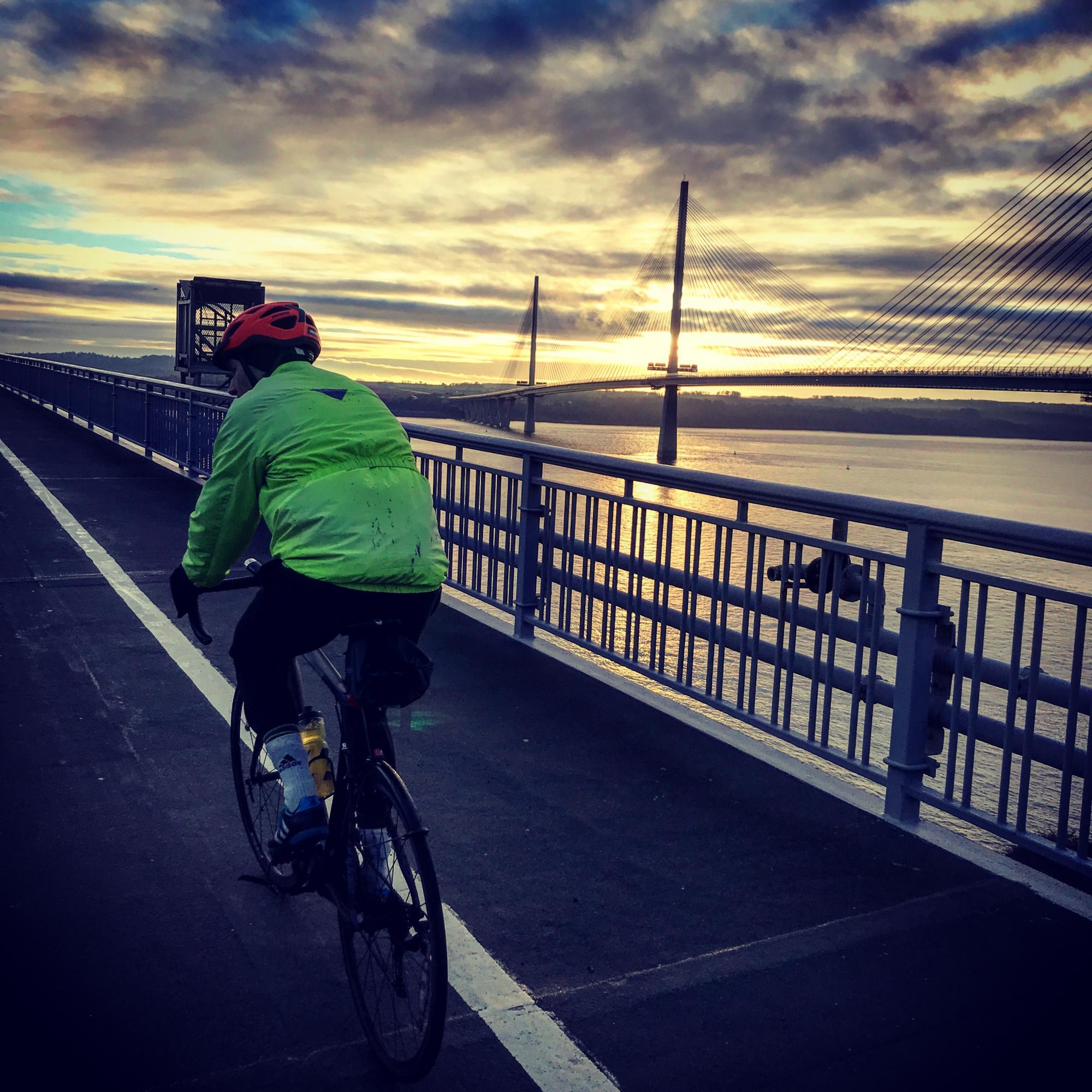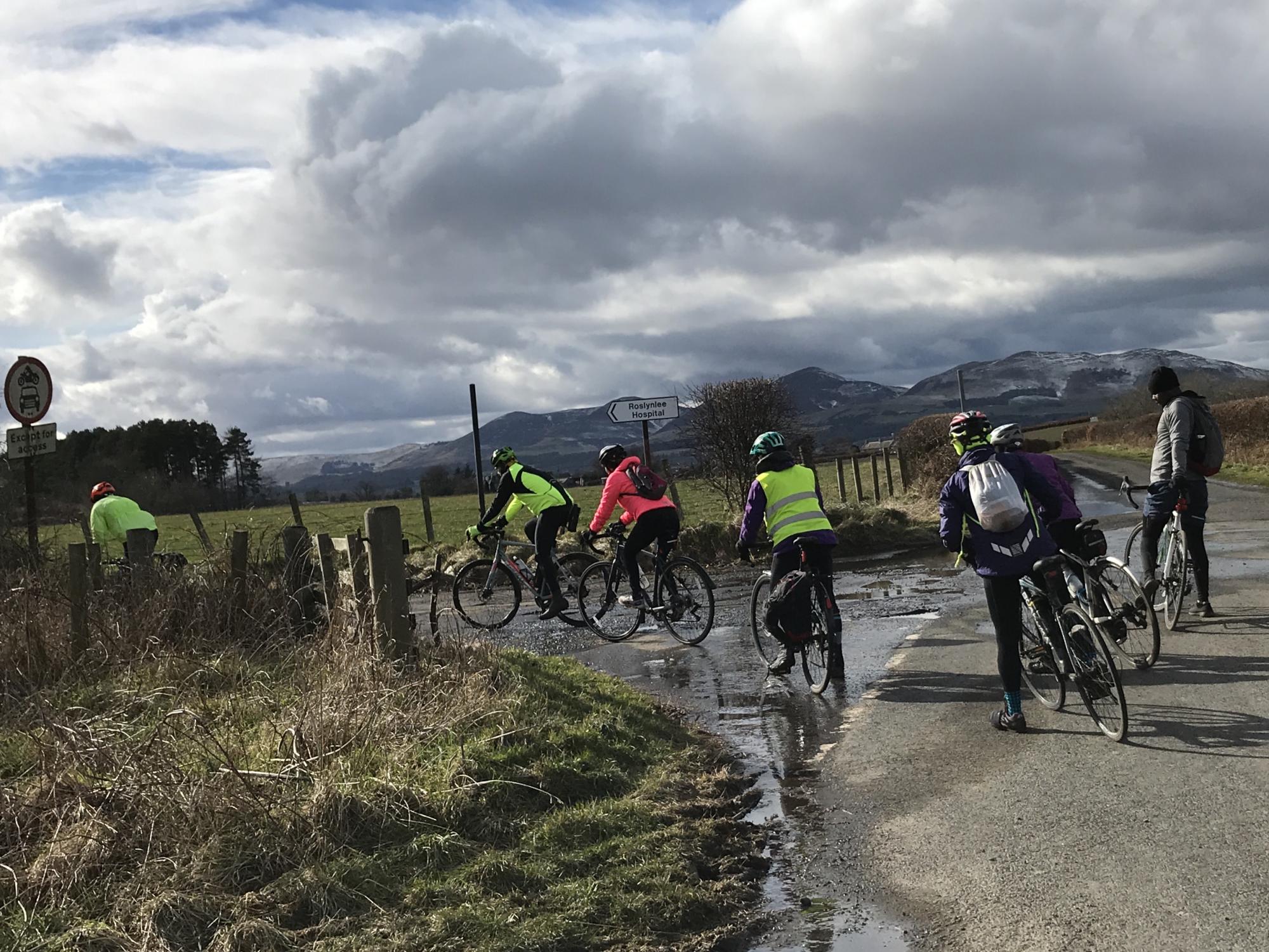Essential Guidelines for Safe Riding

Safe Riding Guidelines for CTC Edinburgh, Lothians and Borders
Group cycling is much safer and more enjoyable when participants adhere to good practice. These guidelines are for rides organised by CTC Edinburgh, Lothian and Borders and should be read together with the ride guidelines provided by Cycling UK, our parent organisation. Please take time to familiarise yourself with these guidelines and ensure that you comply with them when taking part in member group runs.
Who can take part?
Non-members are welcome to join us on 3 trial runs, after which if they wish to continue to enjoy these rides they need to become a Cycling UK member. Riders under the age of 16 can also join our rides but must be accompanied by an adult who takes responsibility for them.
We offer a variety of group rides to support the varied needs of the members. An overview of the different rides available is provided on our main Edinburgh, Lothian & Borders webpage. In addition, more detail on a specific ride is offered by the ride leader in their “invitation” email.
You should make sure you have a serviceable bike, as the ride leader cannot take responsibility for fixing your bike or getting you home. Mudguards are not essential but will be appreciated by others in the group, (and yourself) especially when the roads are wet.
Group rides
If you are new to the group introduce yourself to the leader and tell them of any special needs or issues. You will be asked to give your contact details and those of your emergency contact. Make sure you have the mobile phone number of the leader in case you get separated from the group.
The ride leader will describe the proposed route at the start of the ride and advise on any particular issues. Any sub-group proposing a different route at any point should advise the ride leader of its plans. Group awareness and communication are the key elements to group safety.
Safety tips
Read the Highway Code
- Follow the Highway Code, showing consideration for all road users. There are specific instructions for cyclists in rules 59 to 82 and in rules 211 to 213.
Stay in your small group
- To facilitate overtaking traffic, ride in tight knit groups of up to but no more than six riders.
- Riders in the group should ride closely together, no more than one cycle length apart. If you fall behind, leave a gap of at least 50 metres or join the group behind.
- Keep at least 50 metres distance between groups and significantly more if the road is particularly busy with cars stacked up waiting to pass or long vehicles. Multiple riders strung out along a road without significant gaps are impossible to pass safely and can encourage dangerous driving.
- In some situations it may be safer to ride two abreast (Highway code rule 66). Where the road has two lanes drivers should use the other lane to pass, giving the cyclists the same amount of room as when passing a car (rule 212). However if the road is too narrow to allow vehicles to pass safely you should change to single file (single out). If there are a large number of vehicles waiting behind, consider pulling over to allow vehicles to pass.
- When singling out, the rider on the outside should drop back and make sure there is space to get in. When you single out make sure that there is still a 50 metre gap between groups.
- Please take your turn at the front when there is a strong headwind, if you are able to do so. (See section below on drafting).
Position your bike carefully on the road
- Keep to the left of the road at least 0.5 metres (2 feet) from the kerb. When passing parked vehicles leave a gap of at least 1 metre (3 feet) to avoid being hit by an opening car door.
Be aware of other cyclists
- Always overtake to the right of cyclists in front.
- Always check behind before starting off or changing direction. Be particularly careful to check behind you when turning right.
- Be aware that the cyclist in front can make an unexpected move, (e.g., unpredictable braking/swerving), so leave sufficient gap to be able to react and avoid colliding.
- If you make an unexpected move, you are likely to bring down both the rider behind and yourself. Always signal your move by shouting “Slowing!”, “Stopping!”, “Passing” etc.
-
Shout and signal warnings of danger or change, e.g. uneven or loose surfaces, vehicles approaching or left and right turns.
Be aware of other cyclists' predilections
Note too that many find it uncomfortable to cycle behind a bright red light or worse a flashing red light. So please bear that in mind when positioning yourself in the group and preparing your bike for the ride.
Turns and junctions
- When turning, signal early and clearly.
- At a turn, ensure that riders in the group behind you have seen you turn. If you can’t see the group behind, one cyclist should stay at the junction to check that they have seen the turn.
- Provide space for all road users when stopping at junctions, do not bunch up. When you reach a junction be careful not to block the line of sight for the other cyclists. When turning don’t just follow the rider in front – make sure that it is safe for you to turn.
- At roundabouts you should follow the instructions in the Highway code (rule 79). When turning right you can stay in either the left or right hand lanes. If you choose the left lane you should take particular care crossing exits.
Making progress
- The ride leader will stop at intervals to review future hazards, enjoy the view etc and help the ride stay as a unit. You are expected to keep up with the group. If you lag a long way behind, you may be asked to make an effort to close the gap. If the cyclist in front of you is going too fast for you to keep up let them know by shouting "EASY, EASY" If you are still unable to keep up, the back marker will advise the leader and discuss with you the best options to get home safely.
- Pass a message forward if a gap develops behind you, or if a rider drops behind, e.g. with a puncture or mechanical problem.
Other hazards
- In the event that you are threatened, assaulted or abused while riding, report the incident to the police (101 for non-emergencies and 999 for emergencies). Take a photo if safe to do so and make a note of registration numbers if a vehicle is involved.
- Report road and pavement problems via Cycling UK’s Hazard Report Form or to the relevant council via their website.
Experienced group riders are encouraged to offer friendly advice to others who are not following the guidelines, in order to maintain group discipline and to progress in a safe fashion.
***************************************************************************
Drafting
Pace-lining or drafting means riding closely behind the bike in front to benefit from reduced wind resistance. Drafting can be extremely helpful when riding in groups in windy and adverse conditions. It helps to preserve energy by working together in small groups, often of varying fitness and ability. It helps to encourage those who may be flagging, particularly on a homeward bound stretch when legs are starting to show signs of fatigue. You don’t need to be extremely close to the rider in front. A distance of even half a bicycle length can give up to a 27% decrease in wind resistance.
To draft, up to six riders form a line behind one another with a short distance (30 cm or as close as they are comfortable with) between the back wheel of the rider in front and the front wheel of the next rider.
The group should go at a pace that is comfortable for all – those behind should shout “EASY, EASY” if the pace is too fast. Those with computers (Garmin etc) can assess the speed that is proving to be comfortable/achievable. It can then be maintained.
You should set an agreed time to change the front rider - this can be between be between 3-5 minutes or longer if preferred. The leader should move right, allowing the rest of the group to pass on the left, with the front rider moving to the back of the line.
All riders should look ahead and not constantly down at the wheel in front and as ever, remain always conscious of the need to give and receive forewarnings of upcoming road conditions; pot holes etc. If slowing, don’t brake but just ease off – and shout “slowing”
Avoid overlapping wheels unless you are extremely proficient. To be slightly offset is aerodynamically more efficient but requires skill.
Note too that many find it uncomfortable to cycle behind a bright red light or worse a flashing red light. So bear that in mind when positioning yourself in the group and preparing your bike for the ride.
***************************************************************************
Reviewed and Updated January 2017 by Ride Leaders 2016/17
Update January 2019 reviewed by Ride Leaders 2018
Update September 2023 reviewed by Ride Leaders 2023
Update Nov 2025 following a committee meeting.

